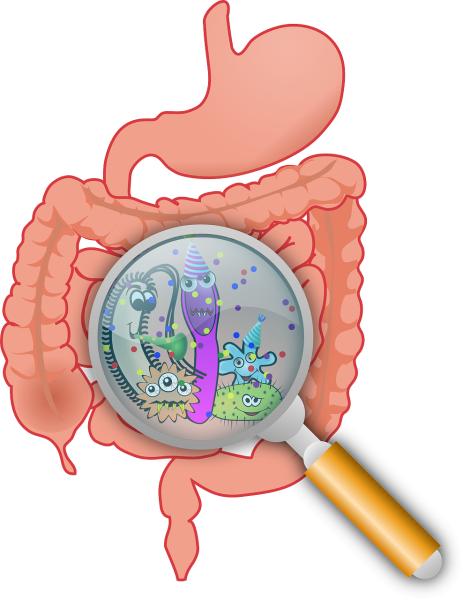Our body, our gases
If you need to catch up on Dr. Bloom's "reporting," look here.
Gases enter our bodies through our noses and mouth. They are released along the same path as well as from the other end of our GI tract, the rectum – but you knew that. By far and away, the gas we inhale and digest the most is air. We move roughly 5-8 liters of gas into and out of our lungs every minute. The expired air is enriched with CO2, so we each contribute a bit to global warming.
We also swallow air while gulping down our meals. For those contemplating a career in medicine, the term is aerophagia, air-eating. It accounts for about 2 liters of intestinal gas per day. The other source of gas within us comes from our food, working in combination with our microbiome. We house a veritable fermentation plant, where our bacterial colleagues chow down on the food we provide and, in return, carry out various fermentations.
Where do all the gases go?
This was the focus of an abstract [1] presented at the annual United European Gastroenterology Conference. As clinicians, they were interested in the prevalence and symptoms associated with these gases. To get to the bottom of the problem, they surveyed the seven most common symptoms related to gases and how they adversely impacted the quality of their lives; in short, to “reflect a person’s overall gas-related symptom burden.” [2]
The survey involved nearly 9,000 respondents, with slightly more males, and a mean age of 44. Many experienced more than one symptom a day; on average they experienced over half of these symptoms:

About half of the air we swallow returns as belching. But flatulence, as well as “difficult gas evacuation,” which sounds undoubtedly as horrible as it is, accounts for most of our gaseous release (not counting breathing!). The Mexican respondents had more symptoms than their more geographically Anglo compadres in the US and the UK – raising the possibility of additional studies stratifying ethnicity and diet.
Would it surprise you that women reported a greater reduction in the quality of their lives than men? Or that individuals older than 50 experienced less of a decline in their overall quality of life? (Me neither) To be fair, neither gender was all that impaired, roughly 16 or 17 on a 100-point scale. Higher scores were associated with greater measures of stress, anxiety, and depression, although no attempt was made to correlate these symptoms with specific gas-related symptoms. The question of whether we fart when we are depressed, stressed, anxious, or become depressed, stressed, or anxious when we fart remains unanswered. Those who have “passed wind” in a crowded elevator or room may respond differently than when flatulent in the solitude and comfort of their homes.
Disclaimer: Several researchers and the funding for the survey and abstract came from Danone’s research arm – the people who bring you yogurt and other modifiers of our microbiome.
[1] Abstracts are short reports presented at the meeting. They have been reviewed for inclusion but have not undergone “peer-review” as found in journals. Some conferences have arrangements for these abstracts to be published in their original format or more extended versions.
[2] You have to love the self-inflated importance of the phrase gas-related symptom burden.
Source: Prevalence And Quality Of Life Impact Of Gas-Related Symptoms In The General Population: Findings From A Survey Of The United States (Us), United Kingdom (Uk) And Mexico United European Gastroenterology Conference




